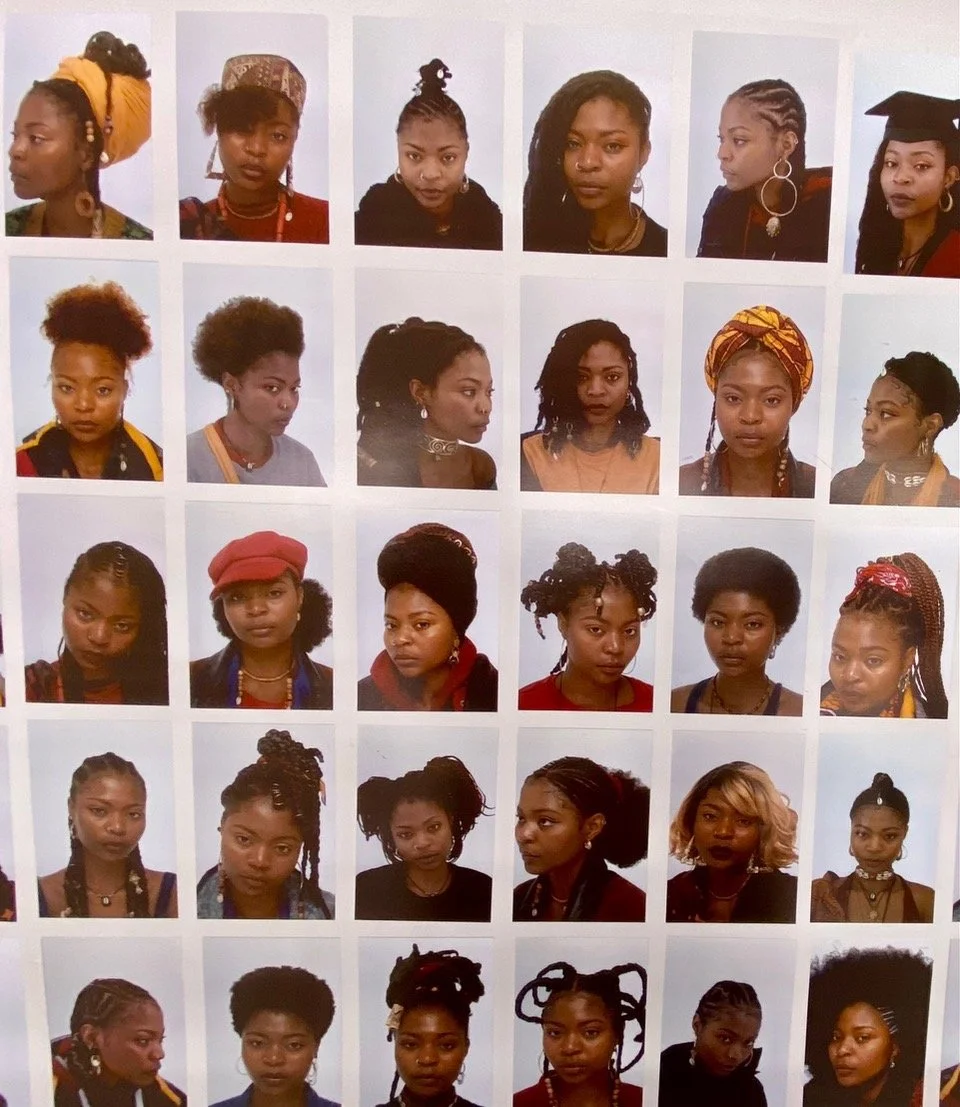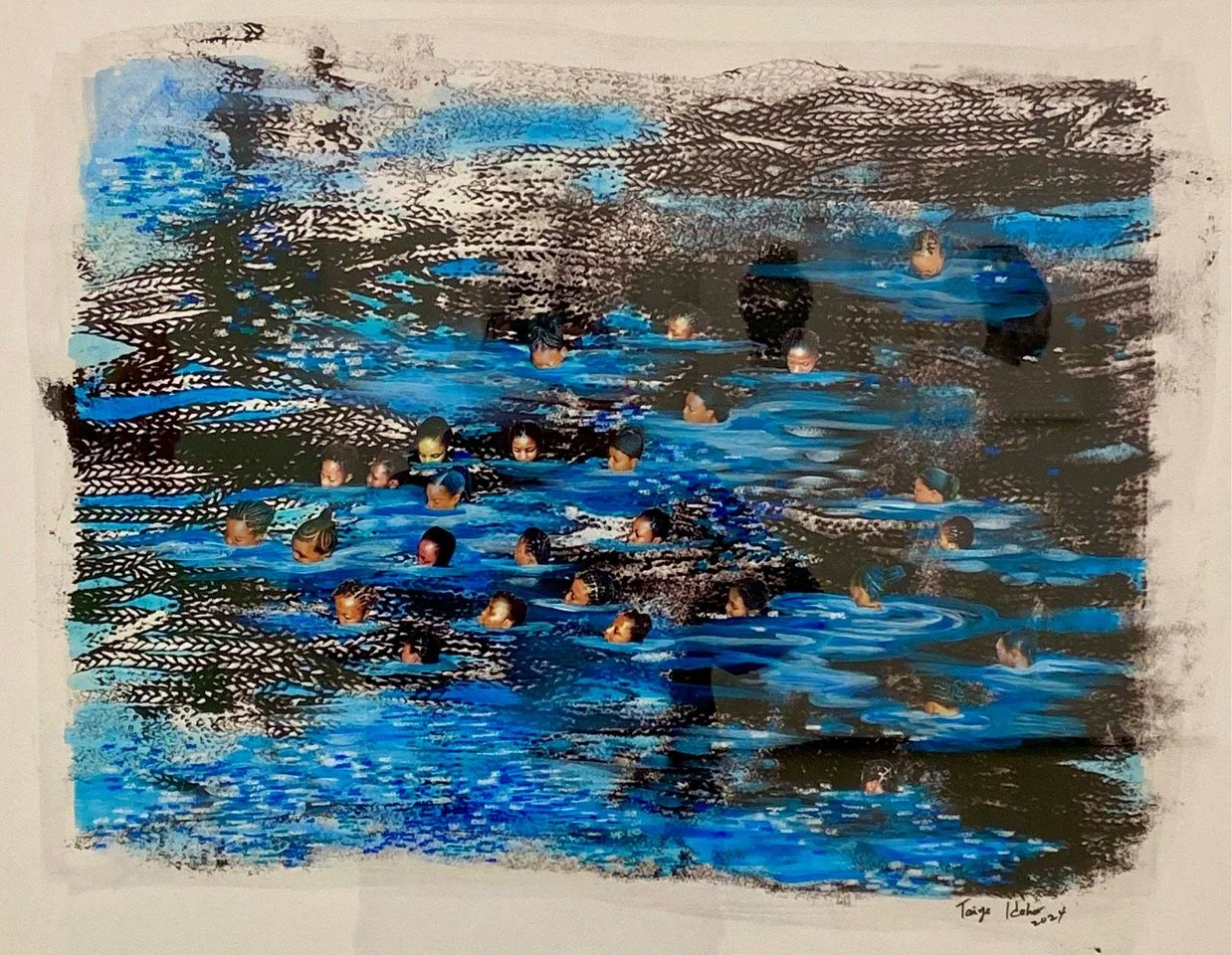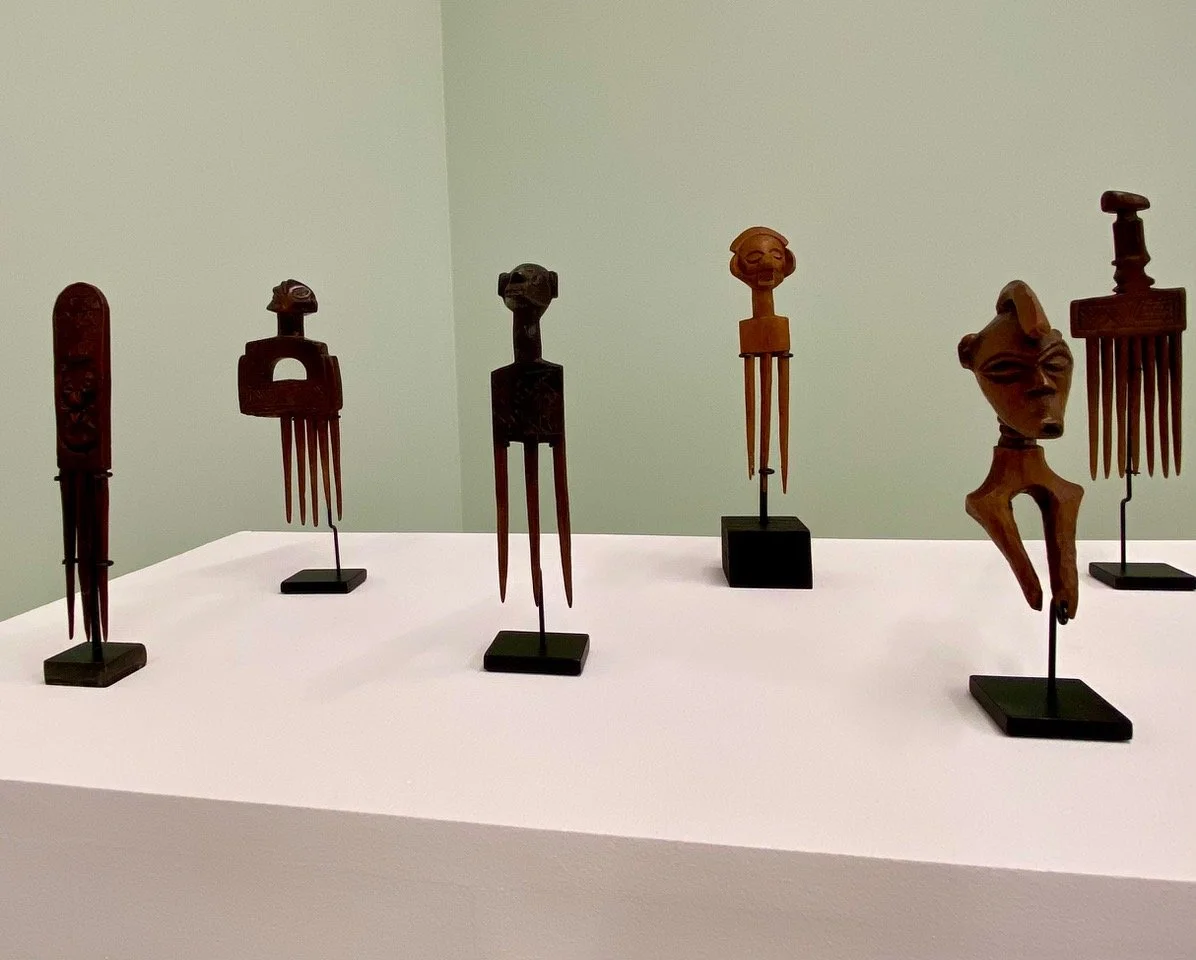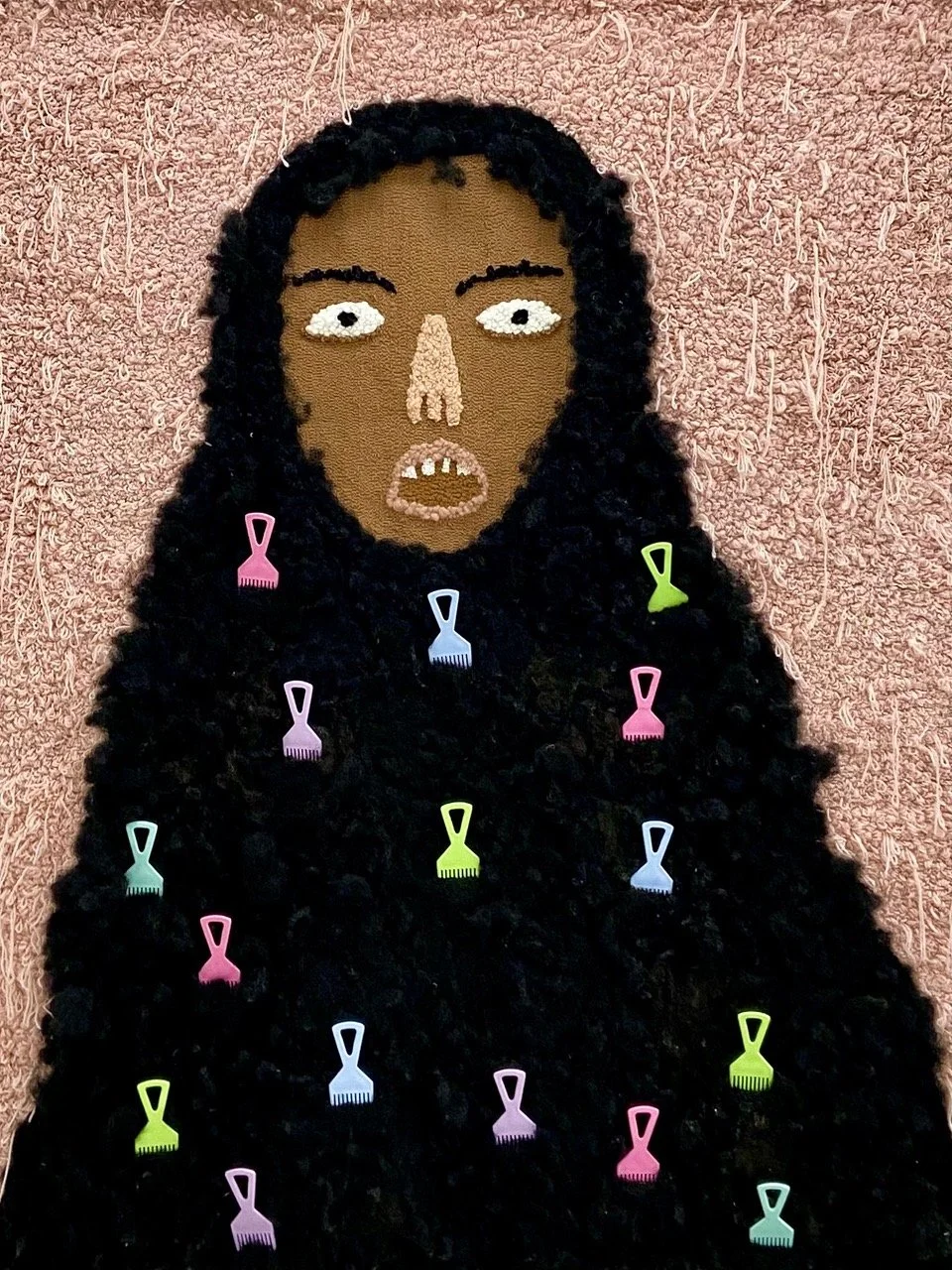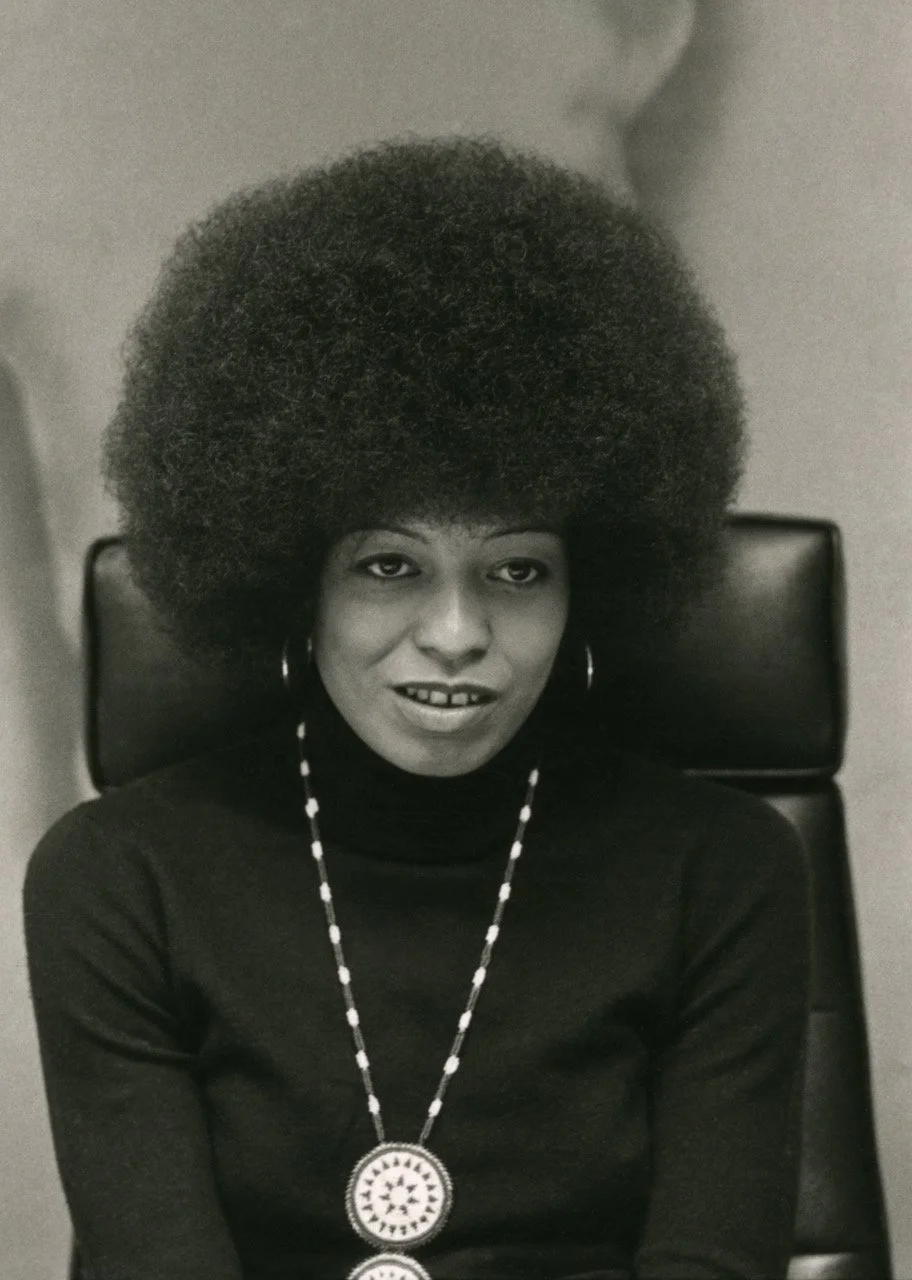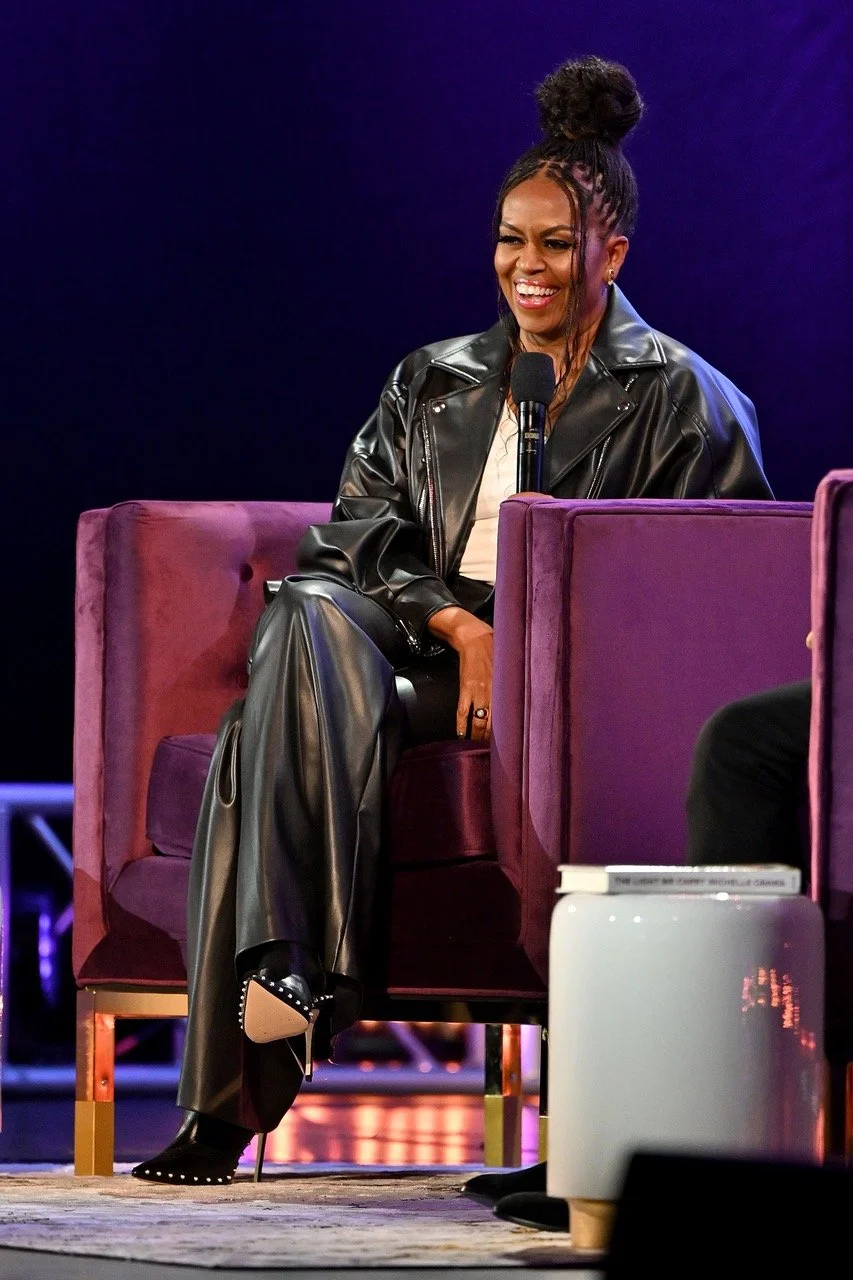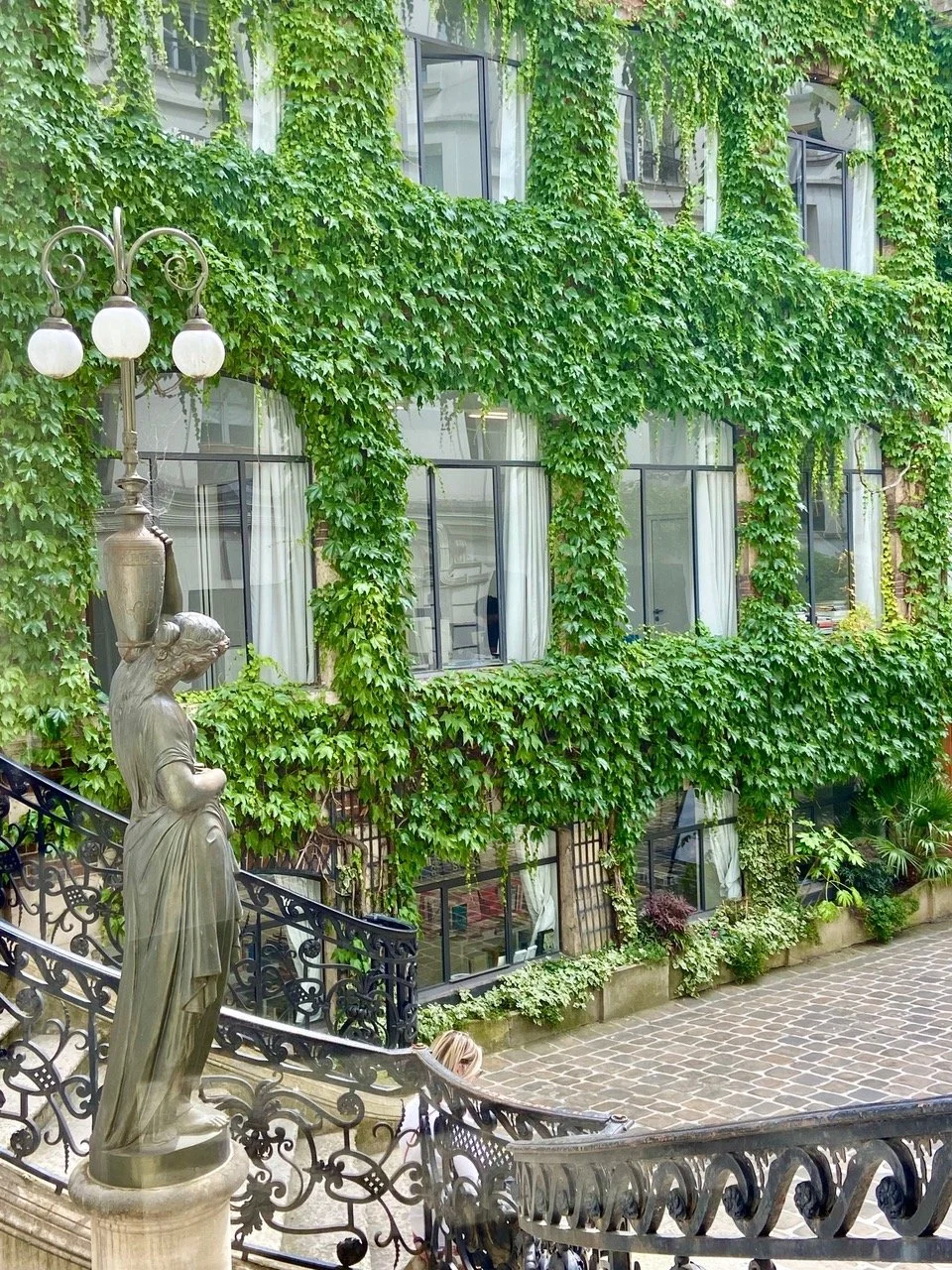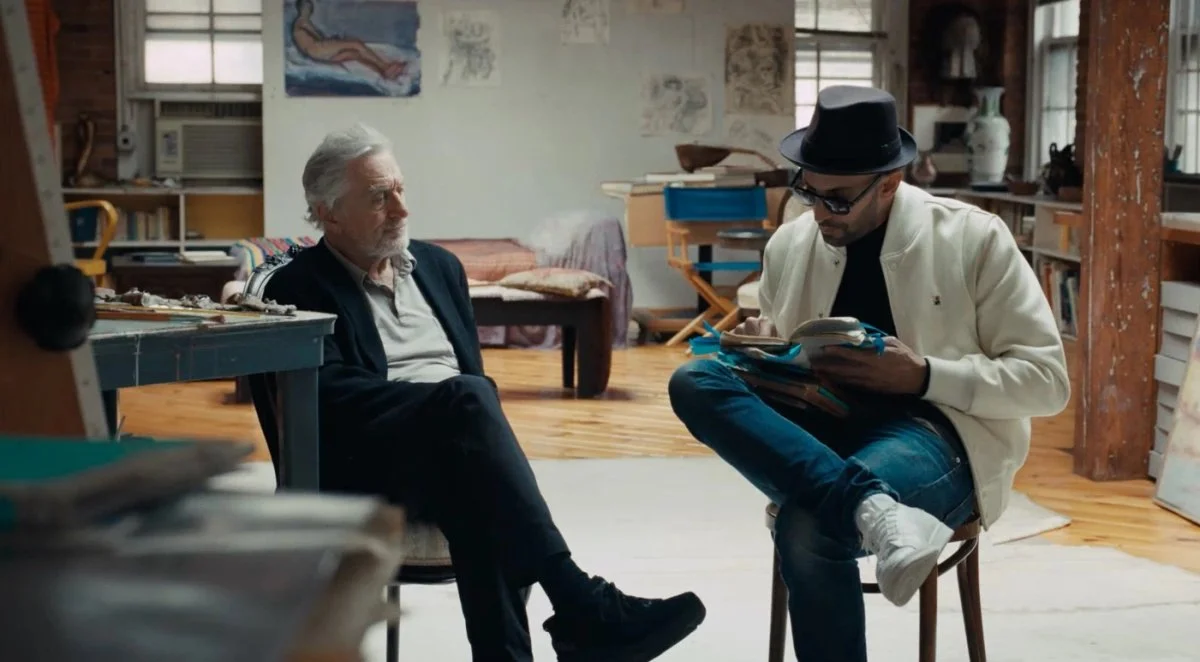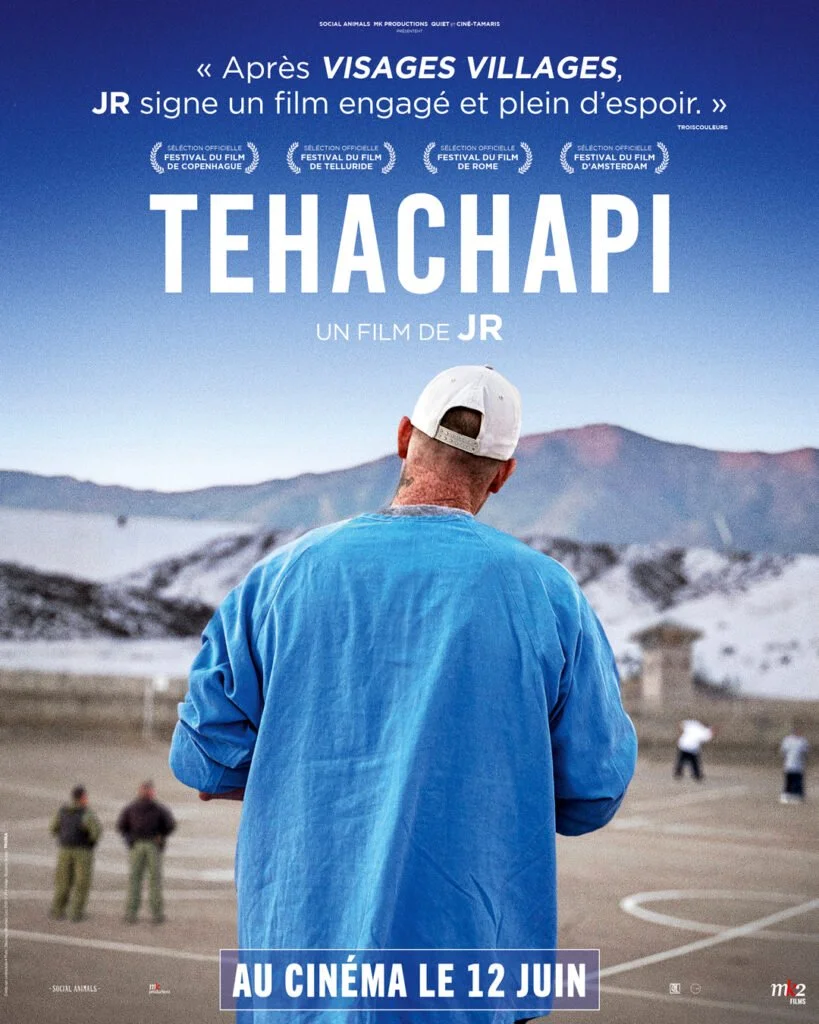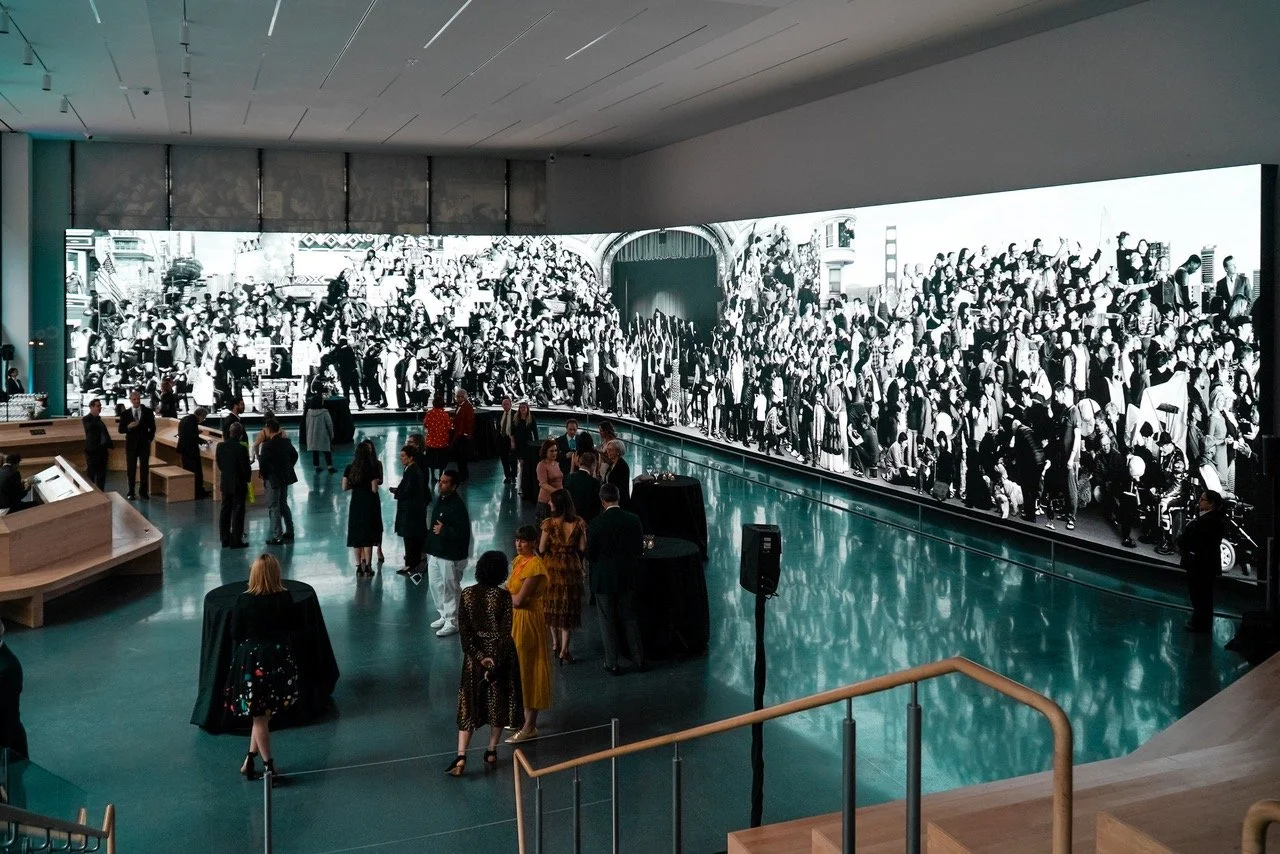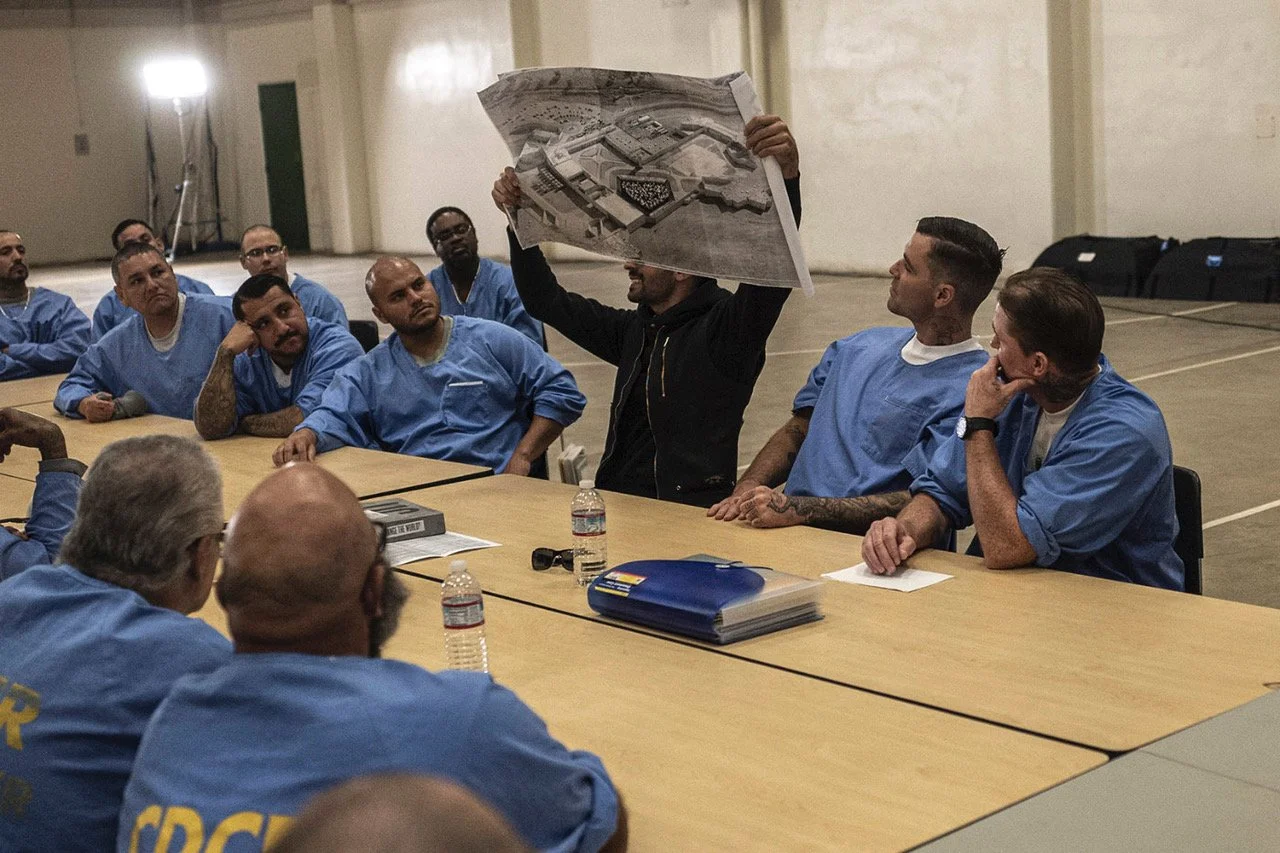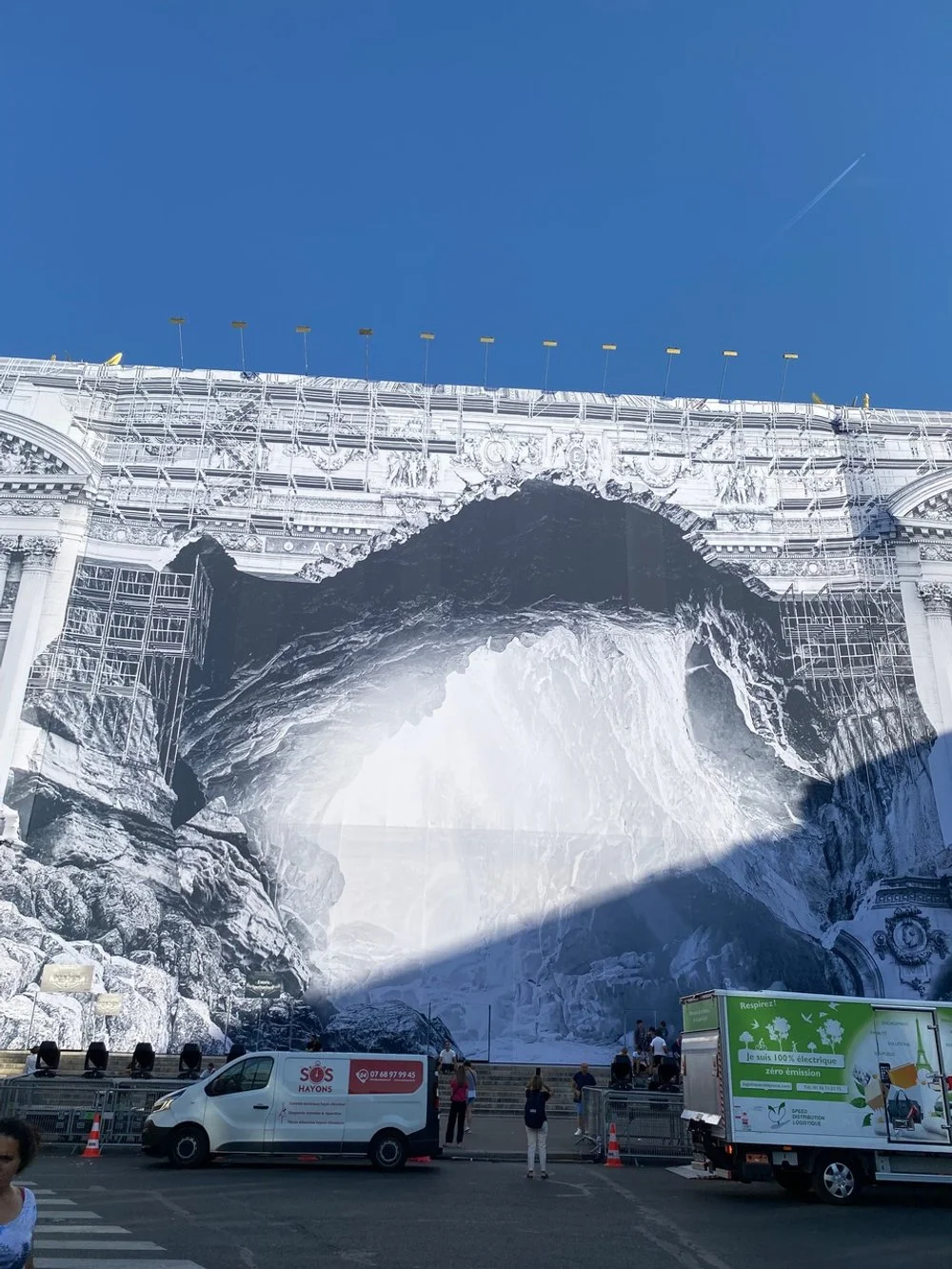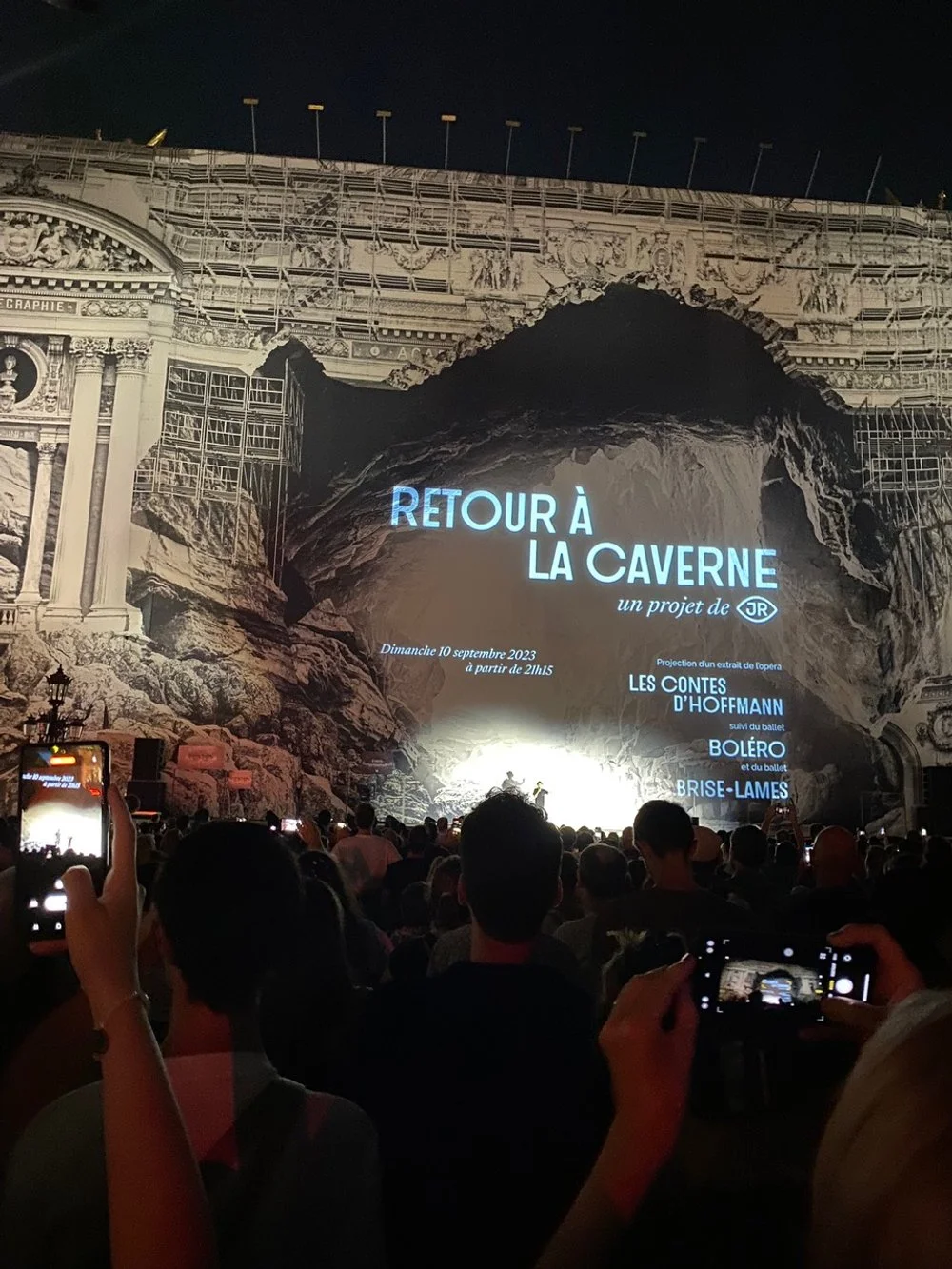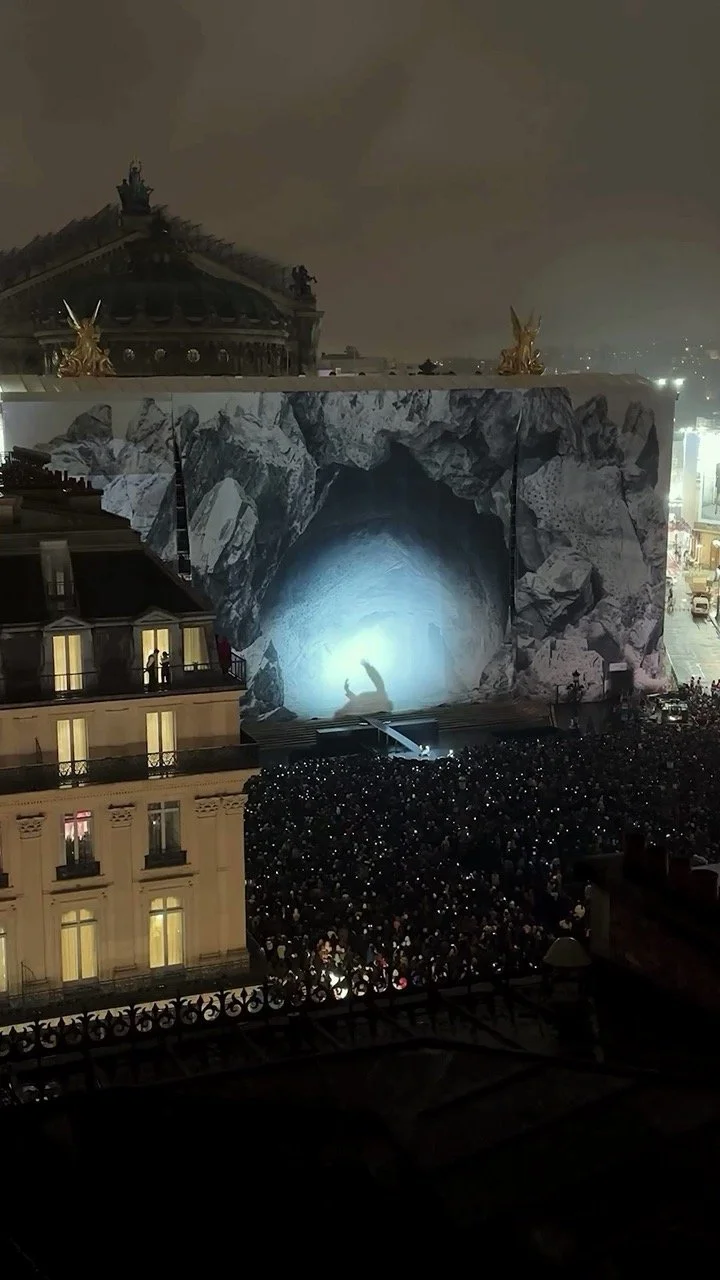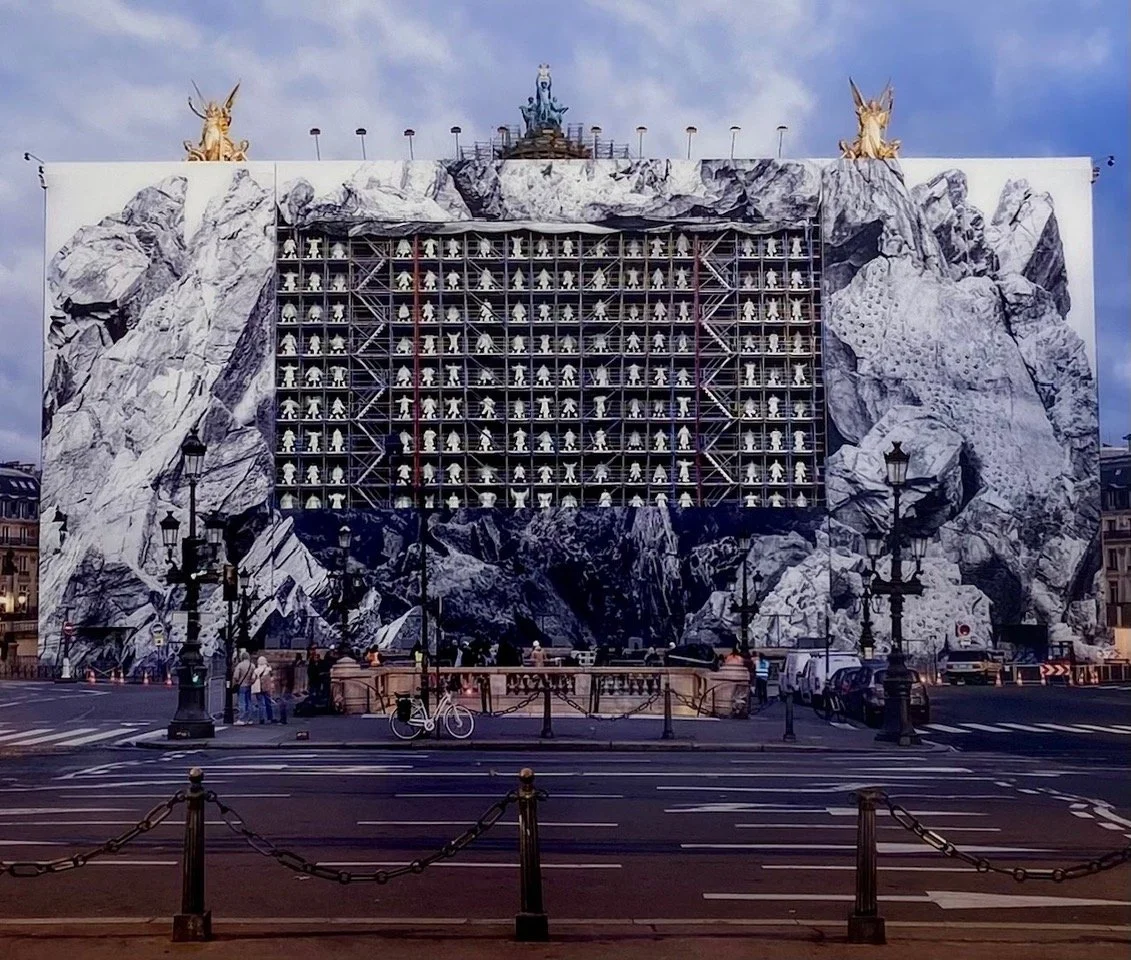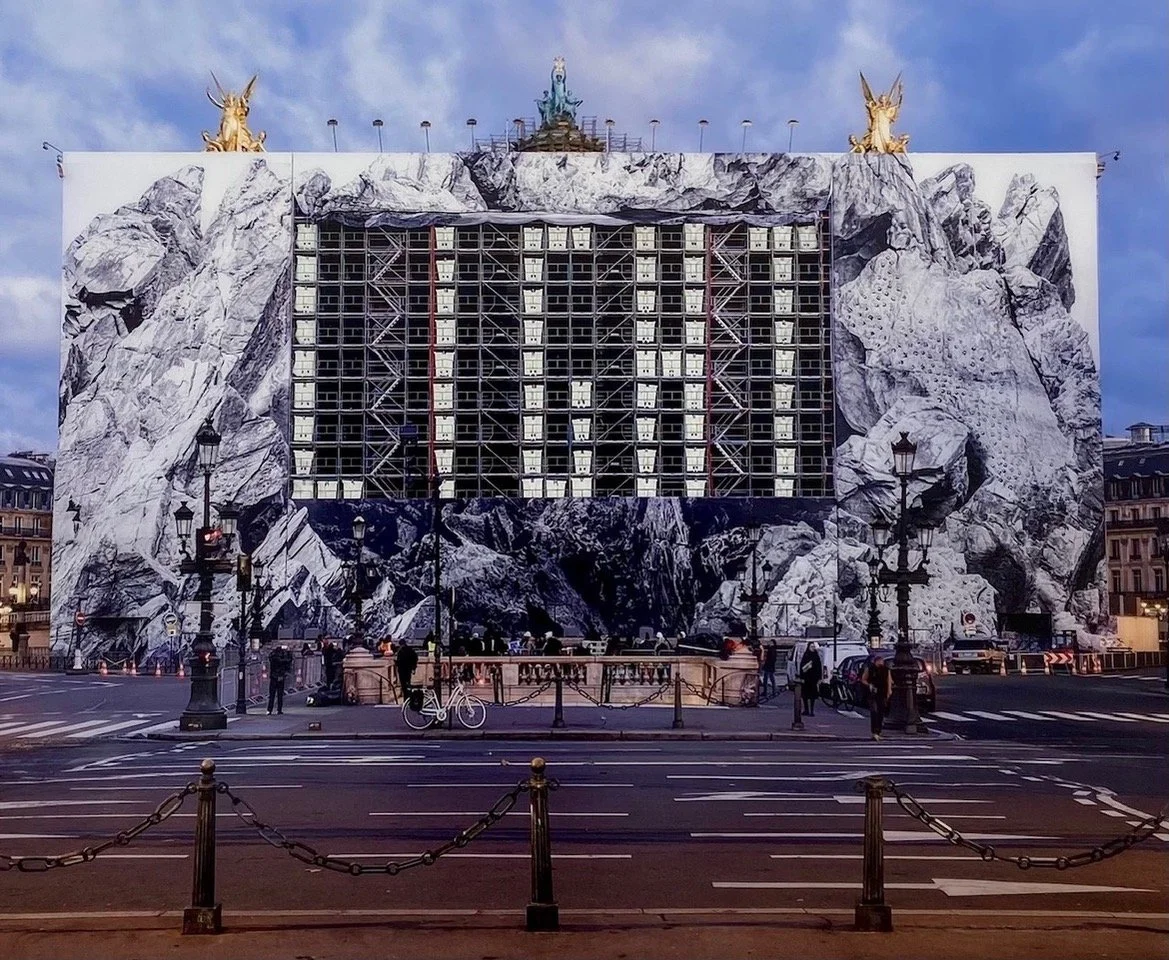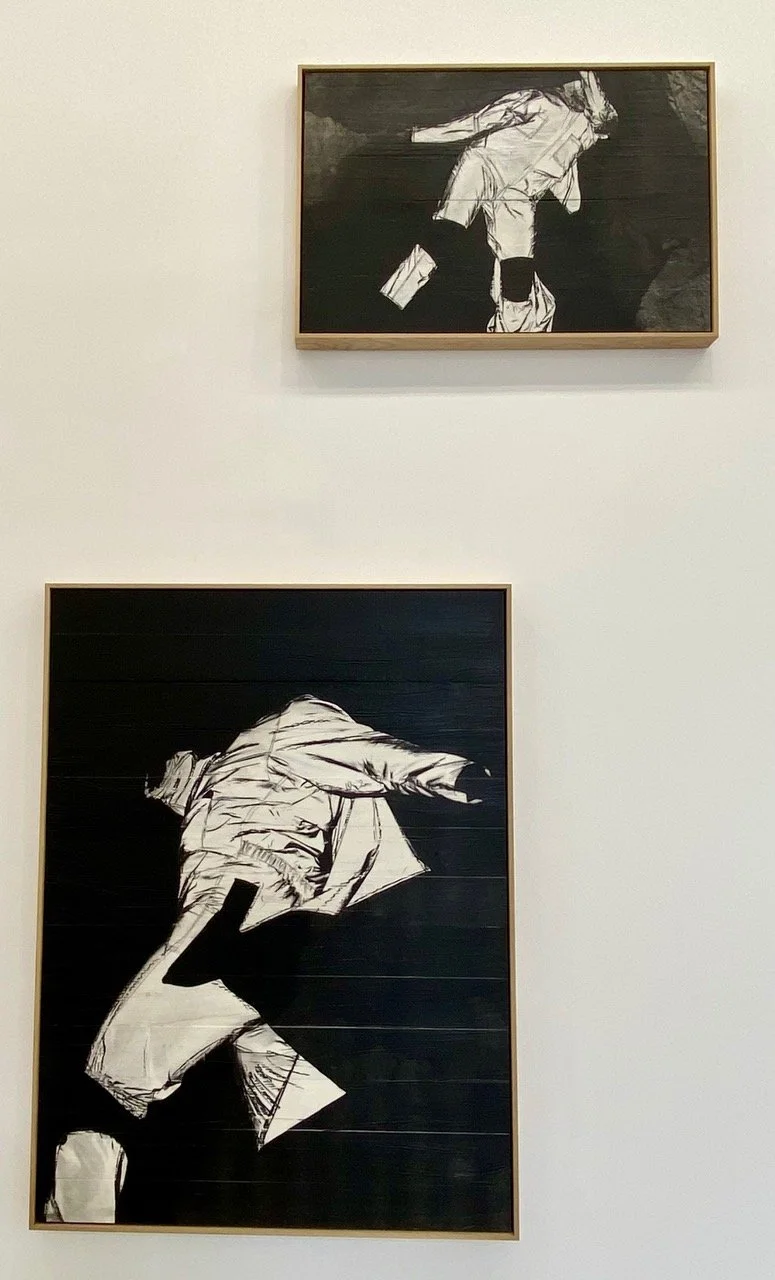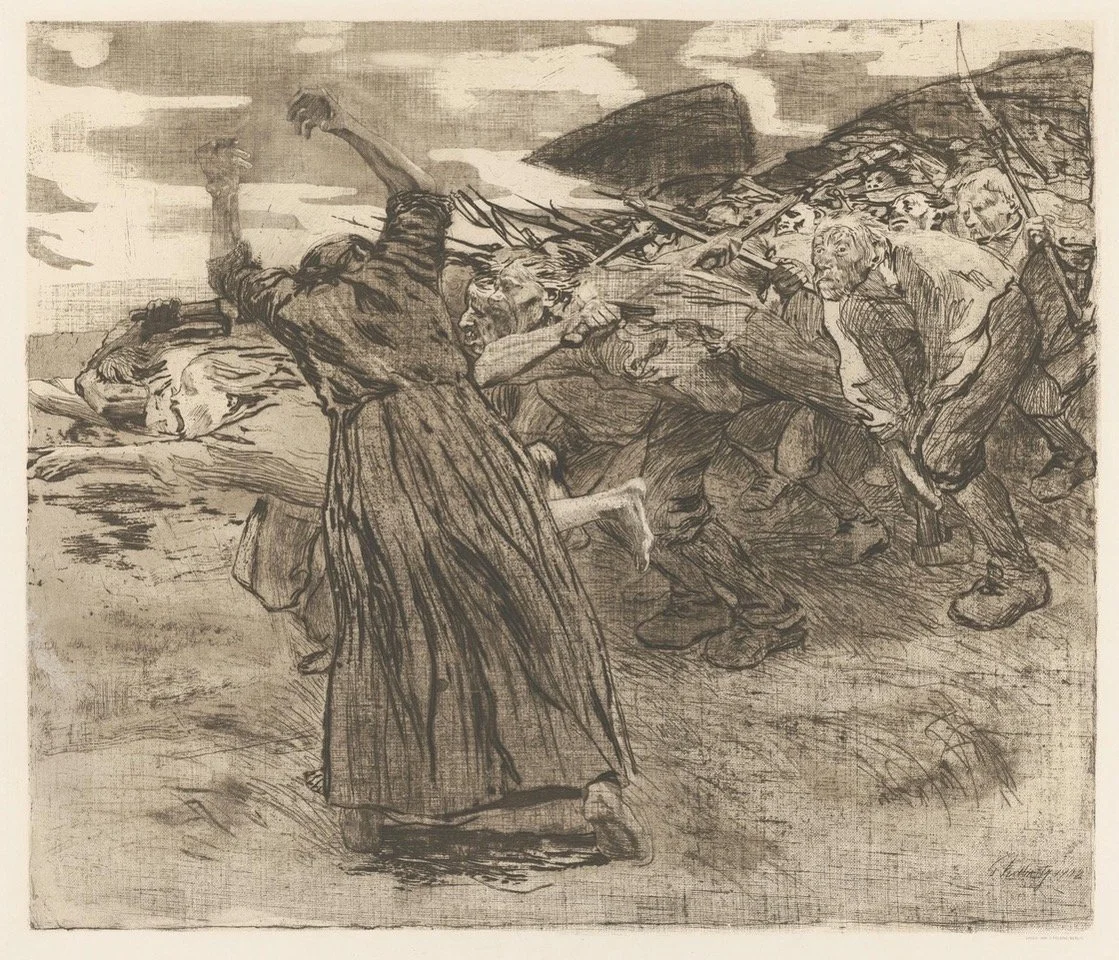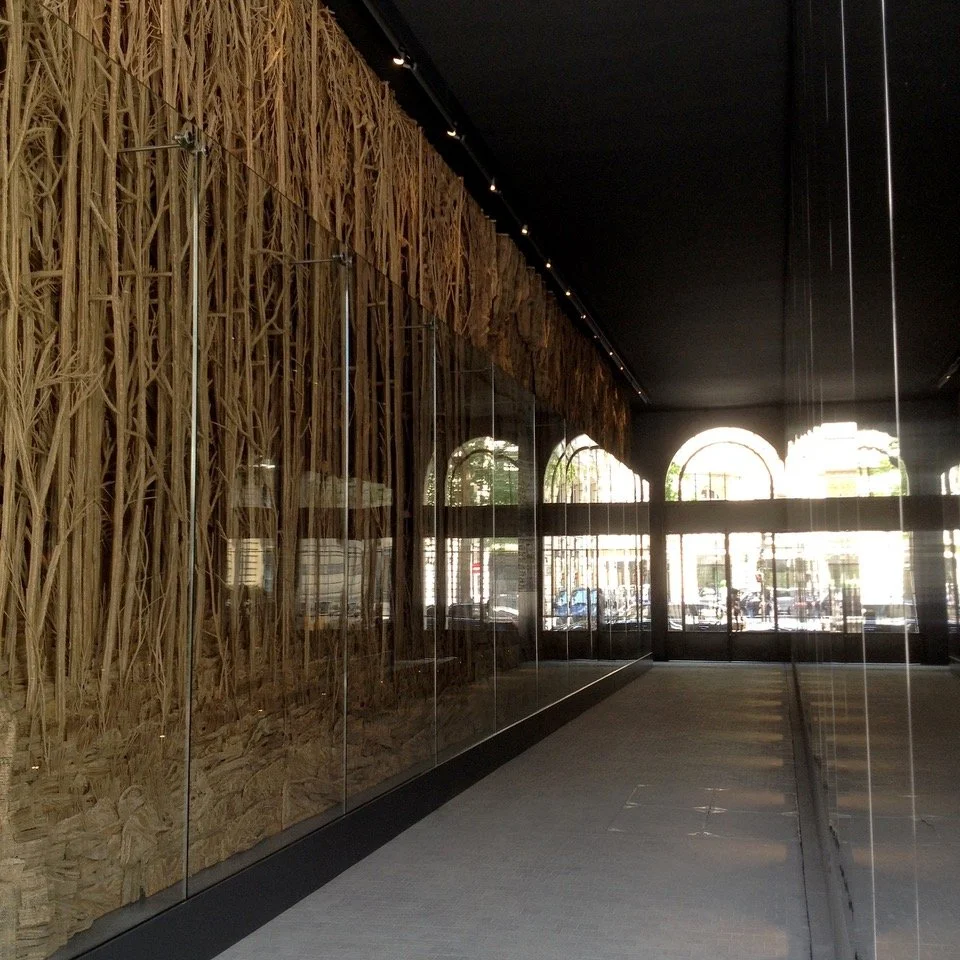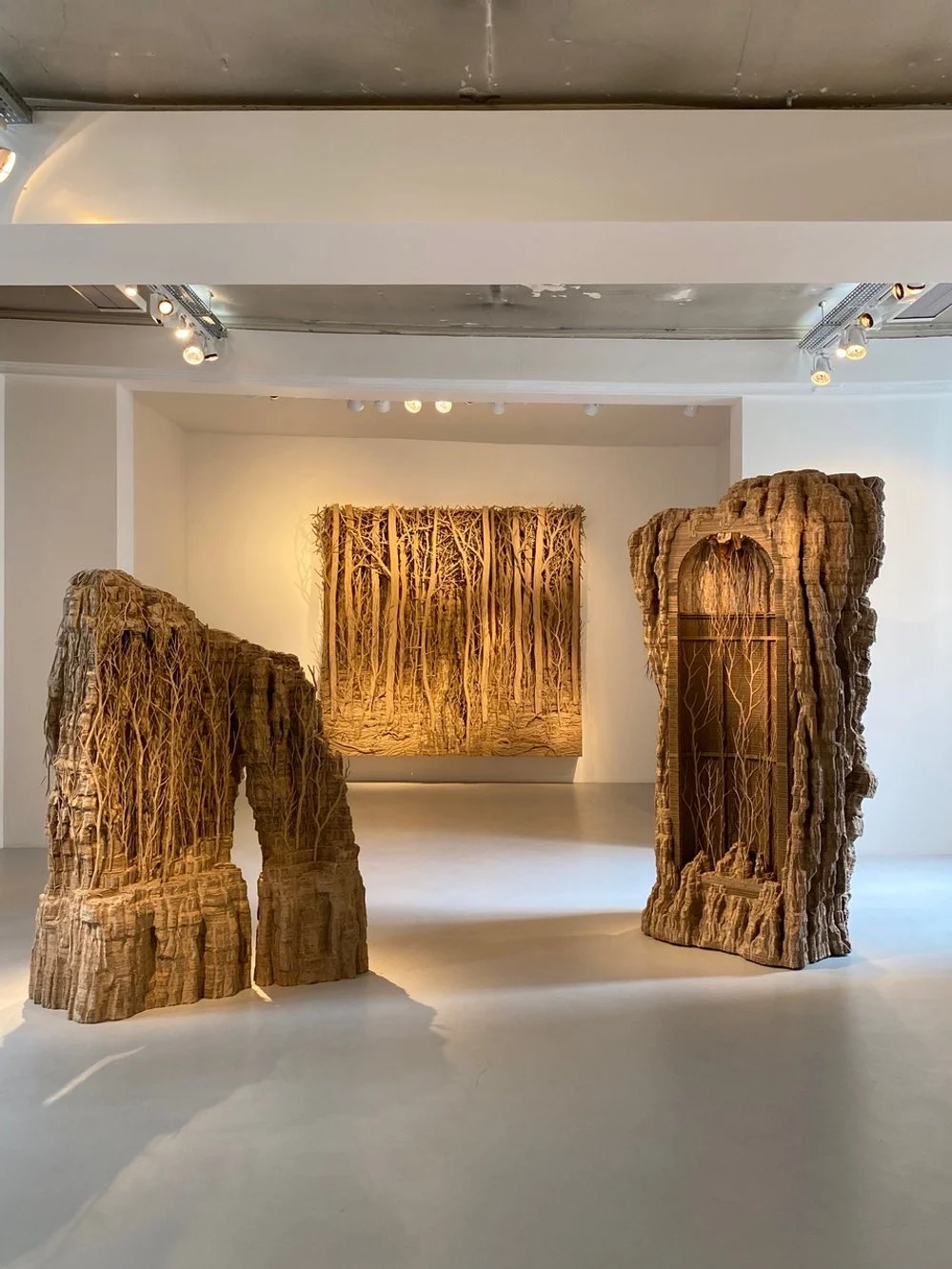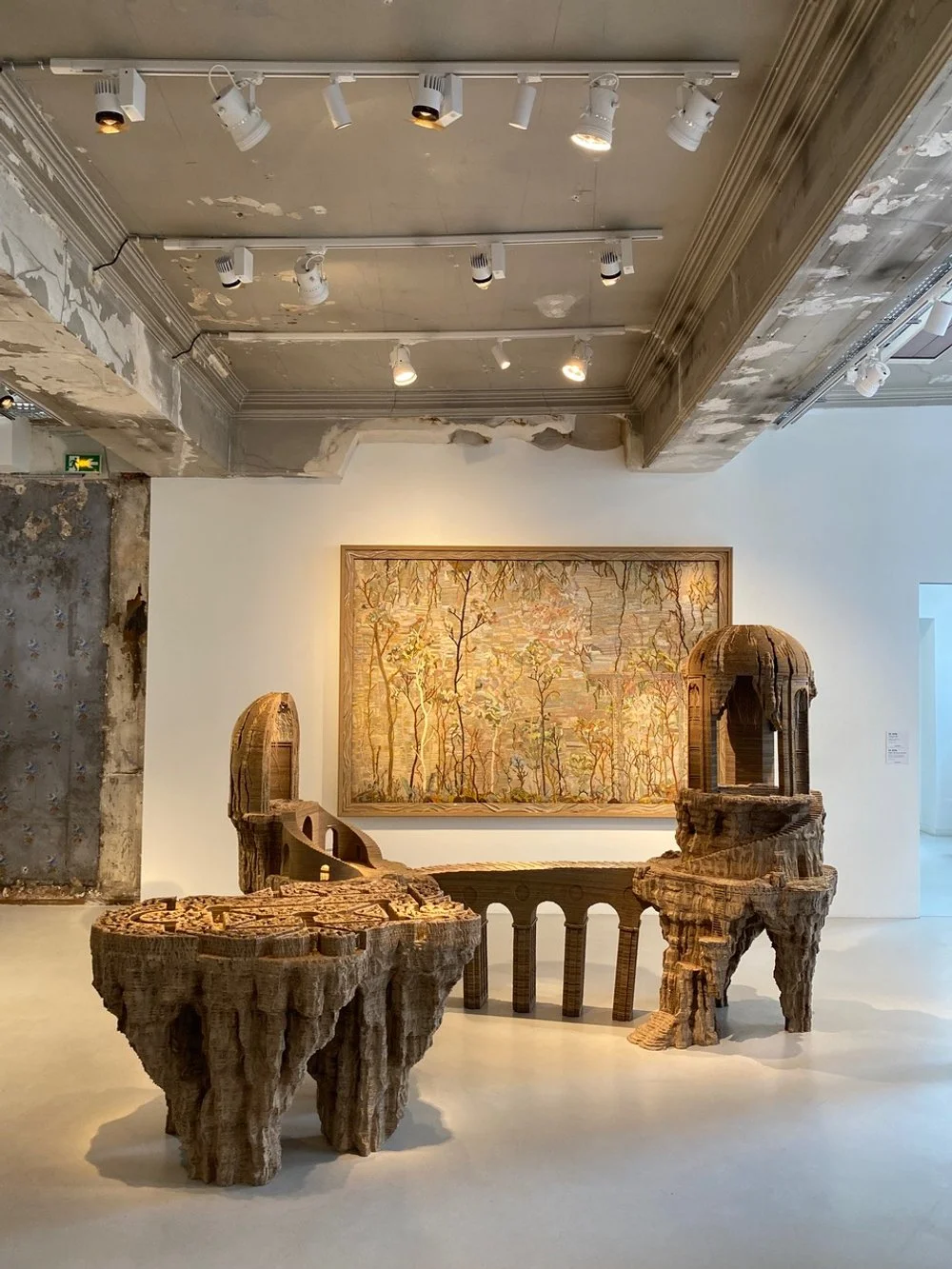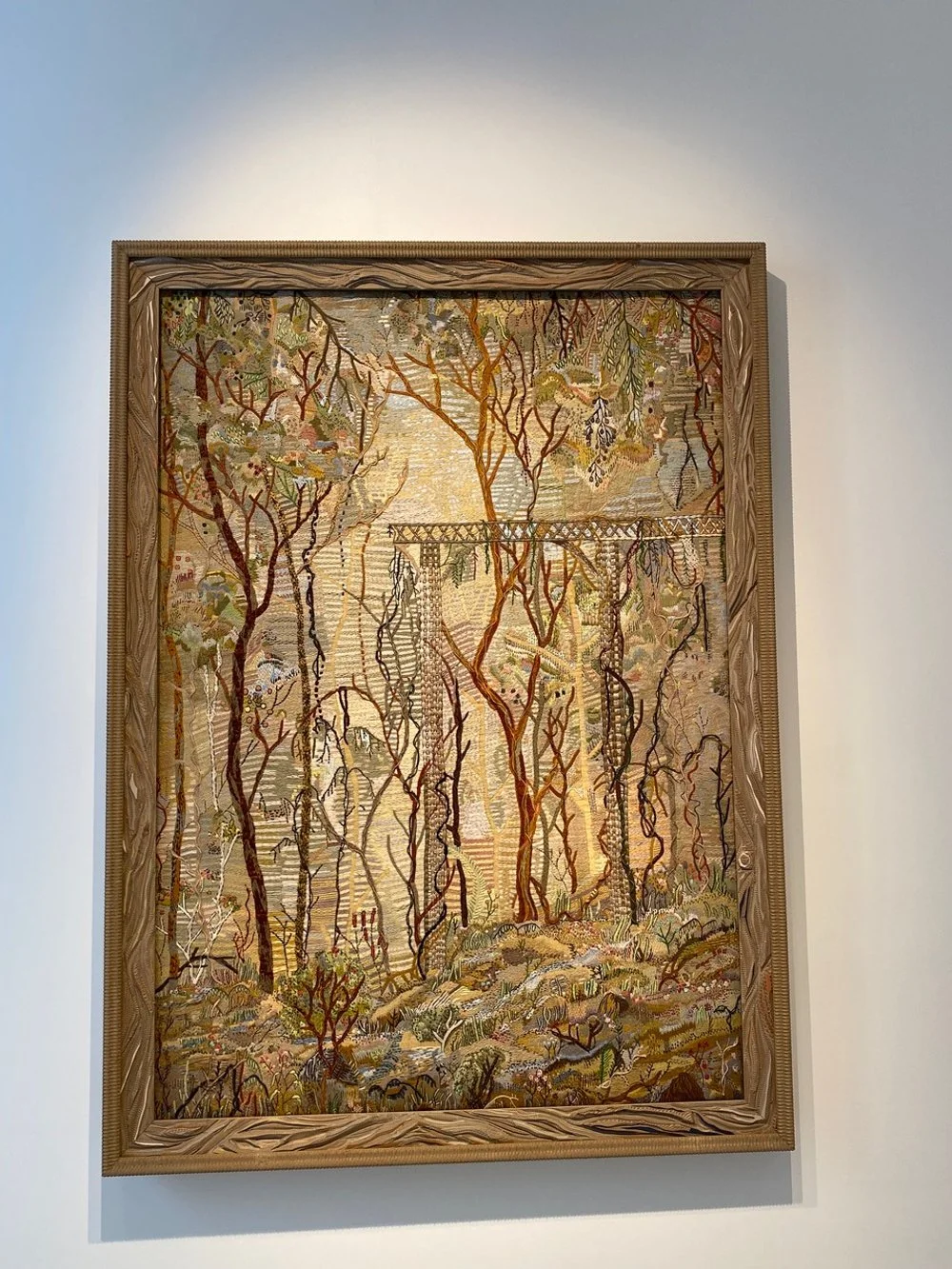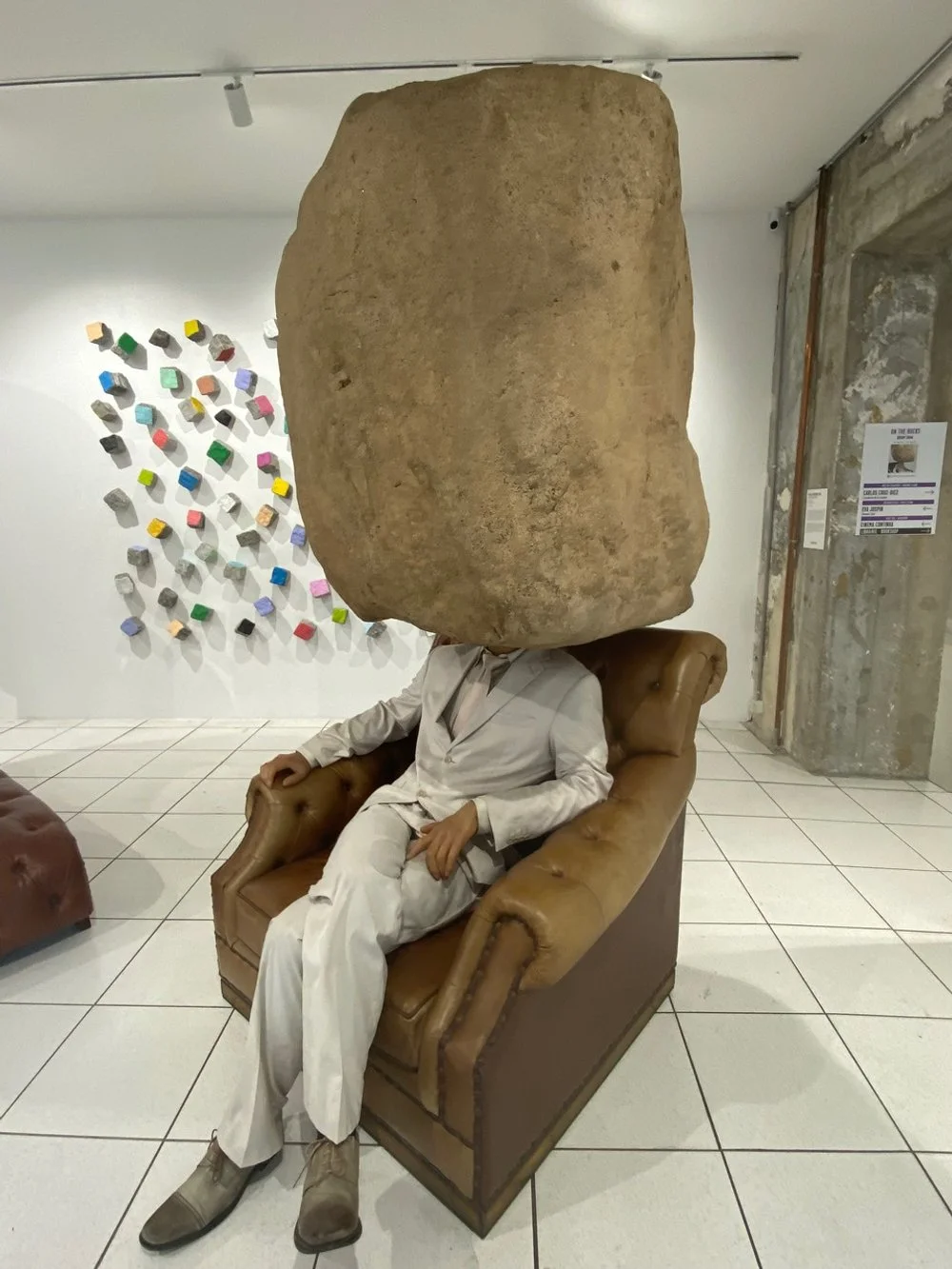Gallery Hopping on a Rainy Afternoon …
Newsletter 06.30.2024
Bienvenue and welcome back to Musée Musings, your idiosyncratic guide to Paris and art. After organizing my overnight stay in Illiers-Combray, (birthplace of Marcel Proust’s father, home of Tante Leonie, of madeleine dipped in tilleul tea fame) about which I will tell you soon, I was at loose ends. But not for long. First of all, I finally began reading The Captive, Volume 4 of Proust’s opus (in English). I initially ordered it from the English bookstore that isn’t Shakespeare & Company (Abbey Bookshop) but after waiting a month for it to arrive, I canceled that order and tried again, this time with Shakespeare and Company. I received in no time and it was less money. Strange. Then I dashed off to the Fondation Louis Vuitton, to see two exhibitions - one on Matisse and another on Ellsworth Kelly, I’ll tell you about them next time. Then with a few hours to spare, I checked out 3 art galleries in my neighborhood - the topic of today’s post.
The first gallery I visited, Magnin-A, occupies a modest storefront building at the intersection of Boulevard Richard-Lenoir and rue Oberkampf. The exhibition, 'Narratives of Black Hair’ included paintings, photographs, sculptures and woven arts. Which, according to the gallery sheet, explore the historical and current narratives and the cultural heritage … associated with the hair of black men and women. (Figs 1-5)
Figure 1. A Statement of Pride, Favour Jonathan, 2017 - Ongoing
Figure 2. Westbound (Wade in the water) Taiye Idaho, 2024
Figure 3. Carved wooden Afro pick comb, which denote group and religious affiliation, etc.
Figure 4. Rhitta Gawr, Anya Paintsil, 2022
Figure 4a. Detail
Figure 5. Amïna, Romuald Hazoumè 2020
I have written about the significance of black women’s hairstyles before. In conjunction with an exhibition at this gallery curated by Victor Omar Diop, Patterned Perfection who has become one of my favorite photographers (along with my daughter, ginevraheld.com). And again after I visited Marseilles and wished I had gotten my hair braided by one of the women whose placards of possibilities line La Canebière. (Fig 6)
Figure 6. One of many posters advertising possibility along La Canebière in Marseille
The Magnin-A gallery sheet explains that hairstyles in Africa serve an important purpose - to identify a person by age, religion, rank, marital status and family affiliation. And not just of women. The warriors of the Wolof people, for example, wore braids in battle to protect themselves and to stay connected with their ancestors. (Fig 7)
Figure 7. Wolof Warrior prepared for battle
The Atlantic slave traders erased this cultural identity, this cultural heritage by forcibly shaving off the hair of enslaved Africans. With those shorn locks went identity, dignity, spiritual ties.
The dominant culture’s response to the hair of black men and women has remained an area of control since slave times. For nearly 175 years, black women have been told that straight hair is more beautiful than frizzy hair. That to advance in school and then in a profession, their hair must be less ‘black’. With a hair iron and later with chemicals, black women's natural hair has been straightened, has been tamed, has been made more ‘white.’ (Fig 8)
Figure 8. Getting hair chemically straightened at a beauty parlor
Since the Black is Beautiful Movement of the 1960s, many black women have worn their natural hair with pride. One thinks immediately of Angela Davis (Fig 9) But it’s a decision that has consequences. For example, when Michelle Obama was First Lady, she could have worn an Afro, as she had in the past. That would have been inspiring, especially for black girls. But she decided that to be the First Lady for all Americans, she had to straighten her hair. In 2022 she explained it this way, American people were “just getting used to” having a black family in the White House. They were “not yet ready” to accept her with her natural hair. (Figs 10-12)
Figure 9. Angela Davis
Figure 10. Michelle Obama as First Lady
Figure 11. Michelle Obama, 2019
Figure 12. Michelle Obama, 2022
I read an article in the New York Times at the same moment this exhibition opened. It’s a horrifying reminder that subscribing to the dominant culture’s definitions of beauty can be deadly. In the article, “The Disturbing Truth About Hair Relaxers,” author Linda Villarosa interviewed Dr. Tamarra James-Todd, a professor of environmental reproductive epidemiology at Harvard. For the past 20 years, James-Todd has “researched the connection between the chemicals in hair products that generations of Black women have used to straighten their hair and the reproductive-health racial disparities that scientists have struggled to explain for decades.”
There is ample scientific data confirming that black women die of breast, ovarian and uterine cancer younger and more frequently than white women do. In a perfect example of ‘blame the victim,’ it has been explained that the cause of this disparity is black women’s lack of education, information and access to health care. All of which leads to late diagnosis and higher mortality rates.
But “(s)cientific evidence proves that straighteners and other hair products marketed to Black girls and women are linked to endocrine-disrupting substances associated with the early onset of menstruation and many of the reproductive-health issues that follow. As James-Todd notes, “(w)omen have long been overlooked in scientific research, and Black women have been nearly invisible.”
Here is a very scary fact and a very good reason to stop buying cosmetics and supplements in the U.S. “Many of the substances contained in … hair relaxers are prohibited in other countries. The European Union regulates more than 1,300 ingredients for use in cosmetics; the F.D.A. prohibits or restricts only 9 ingredients as harmful to human health." No surprise there since, “in the United States, manufacturers, not the government, are nominally responsible for ensuring product safety.” The article was informative and heartbreaking and as good a reason as any (maybe even better) for you to pack your bags and come to France to shop.
With sober thoughts on my mind, I walked to the Galerie Perrotin which is in a gorgeously renovated townhouse in the Marais.(Fig 13) I was there to see an exhibition by JR with whose work I have been obsessed ever since he curated the inaugural exhibition for Galleria Continua in 2021. (Fig 14) Called Truc À Faire, Things to Do, that exhibition took place in a liminal space - between what it had been - a leather good’s shop - and what it would become - an art gallery. JR put his art and those by his contemporaries, everywhere - on the floor, on shelves, on temporary partitions. JR said he conceived the space as a “place …halfway between the cathedral and the supermarket…” I was hooked.
Figure 13, Gracious courtyard entry of Perrotin Gallery
Figure 14. JR at the opening of Galleria Continua, Paris
Although I suspect that most of you don’t follow JR on Instagram like I do, he has been in the news recently. For two very different films. One is the second of two films he made with Robert De Niro focusing on De Niro’s father, Robert De Niro, Sr., an abstract expressionist artist whose studio his son, the Robert De Niro we know, has left untouched since his father’s death 30 years ago. (Fig 15)
Figure 15. JR and Robert De Niro in the art studio of De Niro’s father which had remained closed for 30 years
The first of these two films, made in 2022, was a short documentary exploration of the deception of memory, the importance of records like photographs and how hard it is to ever really know one’s parents. In the film, De Niro says, “I should have talked to my parents more about stuff, because I now don’t know the history.” At the end, he tells his 11-year-old daughter: “.. I'll make sure you listen to me the best I can, because the past goes fast.”
In the second, current iteration, also called The Past Goes Fast, JR pushed De Niro to explore his feelings and his relationship with his father. “To break down De Niro’s walls,” according to JR, “so he could emotionally connect with his family history.”
The other film, playing in theaters all over France and maybe at one near you, is called Tehachapi. (Fig 16) That’s the name of a maximum security prison in central California where the majority of inmates have been imprisoned for nearly a decade, where many have been sentenced to life without parole, where JR took pictures.
Figure 16. Tehachapi, a film by JR
For an article in GQ (12/06/24) Pablo Baron interviewed JR about this project. Here’s what he learned. The whole thing started when a friend of JR’s asked him if he would be interested in working in a prison. JR said he would but he didn’t expect anything to come of it because there’s so much red tape with prisons. What JR wasn’t counting on was that the current governor of California is the former mayor of San Francisco whose photograph JR had taken a few years earlier, for a San Francisco mural project for SFMoMA (2018). (Fig 17)
Figure 17. San Francisco Chronicles, JR, San Francisco Museum of Modern Art, 2019
When Newsom learned that JR wanted to do a prison project, he immediately gave his OK, with surprisingly few restrictions - for example JR could bring his cell phone into the prison. So then, JR needed a prison. His sole criteria was that it had a concrete floor, a surface that he could glue photographs onto. Using Google maps, he found Tehachapi, a prison in central California with a concrete floor. What he didn’t know at the time was that it was one of the most dangerous prisons in California.
JR and his team went into the prison in October 2019 to pitch their idea to 28 prisoners (Fig 18) and 20 prison guards “for a collaborative, artistic project in the central yard.”
Figure 18. JR explains the project to prisoners at Tehachapi
JR and his team photographed the men, one by one, from above. Then each was given a chance to record his story. It wasn’t an interview because there were no questions. The inmates could talk about whatever they wanted to talk about.
Two weeks later, JR returned to paste 338 strips of paper onto the ground. In just a few hours, the prisoners, working alongside guards and members of JR's staff, all with push brooms and wallpaper glue, completed the pasting. There wasn’t much to see at prison yard level but the story is there when looked at from above. Photographs of inmates, former inmates, prison staff and victims standing shoulder to shoulder. JR’s installations (like Christos before him) are intended to be ephemeral. Within three days, they had disappeared, but what had happened there, did not. (Figs 19, 20)
Figure 19. The photos of the prisoners and guards taken from above
Figure 20. JR with Kevin Walsh speaking with people who have just seen the film. Kevin is the man we see from the back on the movie’s poster. He has been released from prison and had his swastika tattoos removed. I hope he’s okay
There’s an app that allows you to scan each prisoner's face and listen to their story. According to JR “…the majority of the members of this project, most of them sentenced to life imprisonment, have regained their freedom….We didn’t make a documentary about prison but a documentary about the power of art in a prison.”
This time I came to Perrotin to see an entirely different JR project. Part 2 of a project I saw with Barb and Erin last September, (Figs 21, 22) which happened over four evenings on the scaffold covered façade of the Palais Garnier on a projected screen that evoked Plato's cave, in front of which ballerinas danced.
Figure 21. Opera Garnier, morning of September 10, 2023
Figure 22. Retour à la Caverne, September 10, 2023 evening performance
Two months later, for one night in November, the entire Place de l'Opéra was closed to traffic for two free performances. Those who attended could not bring umbrellas even though It was a windy, rainy evening. Everyone was asked to wear a headlamp or turn on their cell phone light to illuminate the stage and the dancers.
JR worked with composer Thomas Bangalter and choreographer Damien Jalet and 150 dancers from all over Europe. The piece began with a solo by prima ballerina, Amendine Albisson, dressed in black. (Fig 23) Her shadow was projected onto JR's immense fresco, a cavern masking the scaffolded Opéra. Then, a curtain rose to reveal the dancers, dressed in white, behind a giant grid on the building's façade. All of which was filmed for us to watch at Perrotin. (Figs 24, 25)
Figure 23. Prima Ballerina, Amendine Albisson, Opera Garnier, November 2023
Figure 24. Dancers, November 2023 Opera Garnier performance
Figure 25. Dancers spelling out the world “LIGHT” on facade of Opera Garnier
As JR told Marc Donnadieu of Perrotin, “We don’t chase darkness with darkness. However, each of us can come out of “our” cave…and open ourselves to …the light that we all carry within us. Against the darkness of the world, how can we act? By being yourself the luminous actor of this world that we share…”
The exhibition at the Perrotin, called “Dans la Lumière” includes photographs, films and interviews with the dancers. Original prints by JR, a fusion of photograph transfer, black ink on wood and charcoal, reminded me of the forceful movements of Käthe Kollwitz prints that I saw in Berlin. (Figs 26, 27)
Figure 26. Photo transfer prints, JR, 2024
Figure 27. Charge, Käthe Kollwitz, Charge, 1902
The third and final gallery I visited on my gallery tour was Galleria Continua, also in the Marais. I went to see the work of Eva Jospin whose work I first came to appreciate at Beaupassage on Blvd Raspail. (Fig 28) I plan to see her installation in the Orangerie at the Chateau de Versailles soon. One thing I love about her work is that she uses the humblest of materials - cardboard and wood - to create the most poetic and delicate of sculptures, of installations, really. Her creations sometimes recall forests, other times, architectural ruins. As the gallery sheet notes, “Jospin’s works invite the viewer into a world where the boundaries between the natural and the man-made blur, often leaving us in awe of the meticulous detail and craftsmanship.” In addition to these installations, there is a beautifully woven tapestry on display. (Figs 29-31)
Figure 28. Beaupassage corridor entrance from Blvd Raspail, Eva Jospin
Figure 29. Forests, Eva Jospin, Galleria Continua
Figure 30. Architectural pieces and tapestry, Eva Jospin, Galleria Continua
Figure 31. Tapestry, Eva Jospin, Galleria Continua
Before I went upstairs to see Jospin’s work, I checked out a group show called, ‘On the Rocks,’ a mix of sculptures, installations, paintings and videos. As well as a name with a double entendre. Here are a few things I saw. The first set of sculptures, by the duo Sun Yuan and Peng Yu is called Teenager Teenager. Hyper-realistic figures stand and sit near a television. Hyper-realistic except that their heads are stone which made me think of one of the meanings of ‘on the rocks,’ a drink with ice cubes, which these figures had, for heads. (Figs 32, 33)
Figure 32. Teenager, Teenager, Sun Yuan & Peng Yu, Galleria Continua
Figure 33. Teenager, Teenager, Sun Yuan & Peng Yu, Galleria Continua
There was a stone sandwich, which I had seen at another show at this gallery. (Fig 34) By Pascale Marthine Tayou, a Ukrainian artist who uses stones collected from the banks of the Rika River. These ones she collected at the beginning of Russia’s invasion of the Ukraine. Maybe a reference to the other way in which the words ‘on the rocks’ can be interpreted and that is, a ship stranded ‘on the rocks.’
Figure 34. Stone Sandwich, Colorful Stones, Pascale Marthine Tayou, 2018-2024,
Another artist, whose works I saw in Berlin, was also here, Kader Attia. His piece, called Narciso “offers a contemplative exploration of human vanity through the juxtaposition of an industrial cinderblock and a mirrored surface.” The cinderblock, suspended above the mirror on the floor, suggests lightness but of course it is anything but light, being a cinderblock and all. It’s the reflection that is suggests vulnerability. Narcissus drowned when he looked too closely at his reflection. If this cinderblock were to fall, it would be the mirrored reflection that would shatter. (Fig 35)
Figure 35. Narciso, Kader Attia. Cinderblock and its mirrored reflection
There are galleries all over Paris. Next time, don’t walk by, walk in. They’re free, no reservations required. And the staff are often knowledgeable and helpful.
Today is voting day here in Paris. For an election called three weeks ago. To Americans, the idea of an election held a few weeks after it is called, sounds like a dream. President Emanuel Macron called the election hoping that his party would win enough seats to become the majority. Hoping that enough people would find both extreme right and extreme left so repugnant that they would have no other choice. But no one expects his bet to pay off. In this first round, today, people I know will hold their noses and vote for Macron’s party. For the ‘play off’ next Sunday, those same people, still with their fingers clasping their noses, will vote for the extreme left. And then on Monday morning, we will wake up to what people have been worried about for the past 20 years, a government of the extreme right. And so it goes.
Thanks so much to those of you who left Comments about last week’s post. They are very much appreciated. Gros bisous, Dr B.
New comments on Two fountains, Two exhibitions, Two free meals :
I love and appreciate your comments about First Republic. I felt the same, I just loved them and no other bank will live up to them - they were what a bank could and should be. Eva
Interesting discussion about locales, friends and foods. Your words on the defunct bank brought it to life----almost like a friend who is gone. Your writing brightens my day!! Harriet, Boston
Thank u, mercis for wonders of art, fashion flowers, food, feminism …. I read Nicci French, memory game decades ago and it was a hit back then before internet noir. I'll dig it out and check how conditioned I have become. Have u read, The Dry? Australian crime, many of them now. These new authors capture the dry, dusty, desolate, desert dirt and despair of Aussie land, esp West Australia. I'd love to come to a French country village for some culture- any ideas?? Vivian
I love your weekly posts and always mean to comment on something you mention.
Today, for instance, your In Memoriam stands out. First Republic was our bank, too, We’re still looking for a replacement with at least some of the services it offered: Humans to answer phones and our questions! Humans to happily correct things that go wrong! (Once in NYC, slightly damp from the rain, we went in to cash a check. The banker noticed and offered us each an umbrella! We gave one to our friend who hosted us in NY and brought the other home to SF where it reminds me of how things once were. First Republic was in a class by itself and extremely classy. It is evidently irreplaceable.
And your acknowledgement of the jewel, the Forney! We always see anything they show during our stays. As a former graphic designer, this place is right up my allée and somehow we've known about it seemingly forever. Years ago, we even searched for a particular poster in their outstanding graphic library. The staff was impressive and helped us accomplish our mission. Love that place! And the garden’s not bad, either.
Such lovely informative writing every week and so many discoveries.
Enjoy everything you do and keep sending that enjoyment to those of us who delight in reading what you do and what you think and what you put in your mouth! Melinda, San Francisco & Paris
Copyright © 2024 Beverly Held, Ph.D. All rights reserved
Dear Reader, I hope you enjoyed reading this article. Please sign up below to receive more articles plus other original content from me, Dr. B. Merci!
And, if you enjoyed reading this review, please consider writing a comment. Thank you!
Hello Beverly-
Thanks you for recommending THE HEBREW TEACHER. https://www.museemusings.com/blog/it-wasnt-a-very-good-time-for-hebrew?rq=The%20Hebrew%20Teacher
I finally got around to reading it. I loved it. She writes so beautifully and skillfully creates totally relatable characters. My husband liked it too. I enjoyed all three novellas but he couldn't relate to the last story about raising the teenage girl(we raised one boy)..We both especially appreciated that after sharing the angst of each character, she ends each story abruptly with a sprig of hope.
Greatly enjoyed your wonderful art adventure in Germany. https://www.museemusings.com/blog/ice-bin-ein-berliner
https://www.museemusings.com/blog/ich-bin-ein-berliner-ii
https://www.museemusings.com/blog/ich-bin-immer-noch-ein-berliner-im-still-a-berliner
I have not been to Germany since the 70s and never felt so unwelcome and uncomfortable in any other European country. Needless to say I never went back. I had no idea about the amazing art scene you described. The Jewish Museum visit was particularly compelling. The extremely evocative architecture seemed to be haunting. I imagine it makes for a difficult and emotional experience. Thank you for sharing your trip and opening my eyes to a Germany I didn't imagine.
I do hope your house sale finally went through. Been there..done that with an old house. As soon as you think all is well and the deal is done and then little things break and go awry that never happened when you were living there. Very stressful!
Sorry to ramble on but I do appreciate your writings as an old, retired but stilll enthusiastic art historian myself. Please keep it up!
By the way, your son, Nicholas is adorable. My son lives far away also (we live in upstate New York and he lives in Montana) so I sympathize with the anticipation of the China move. Shirley, New York

